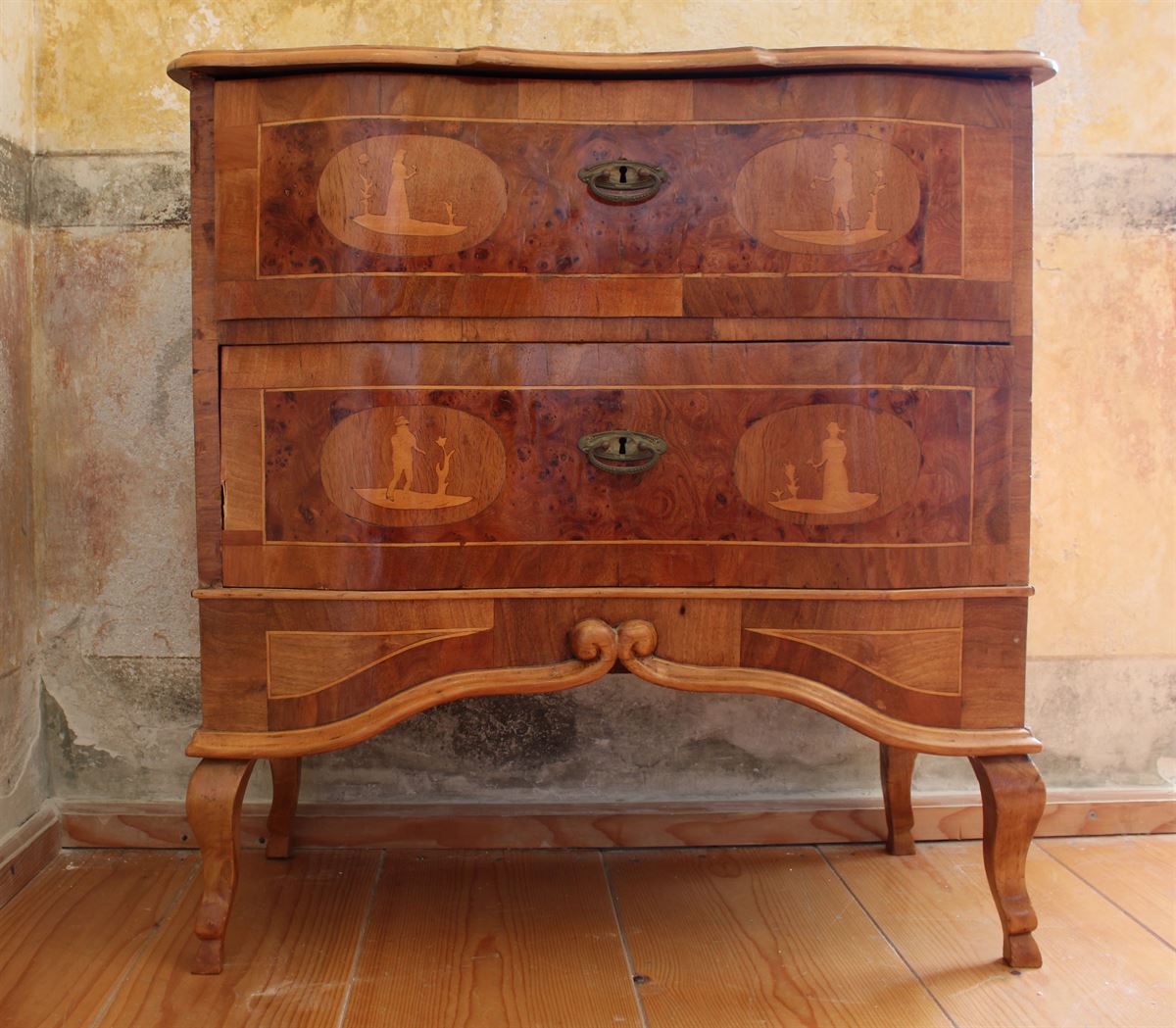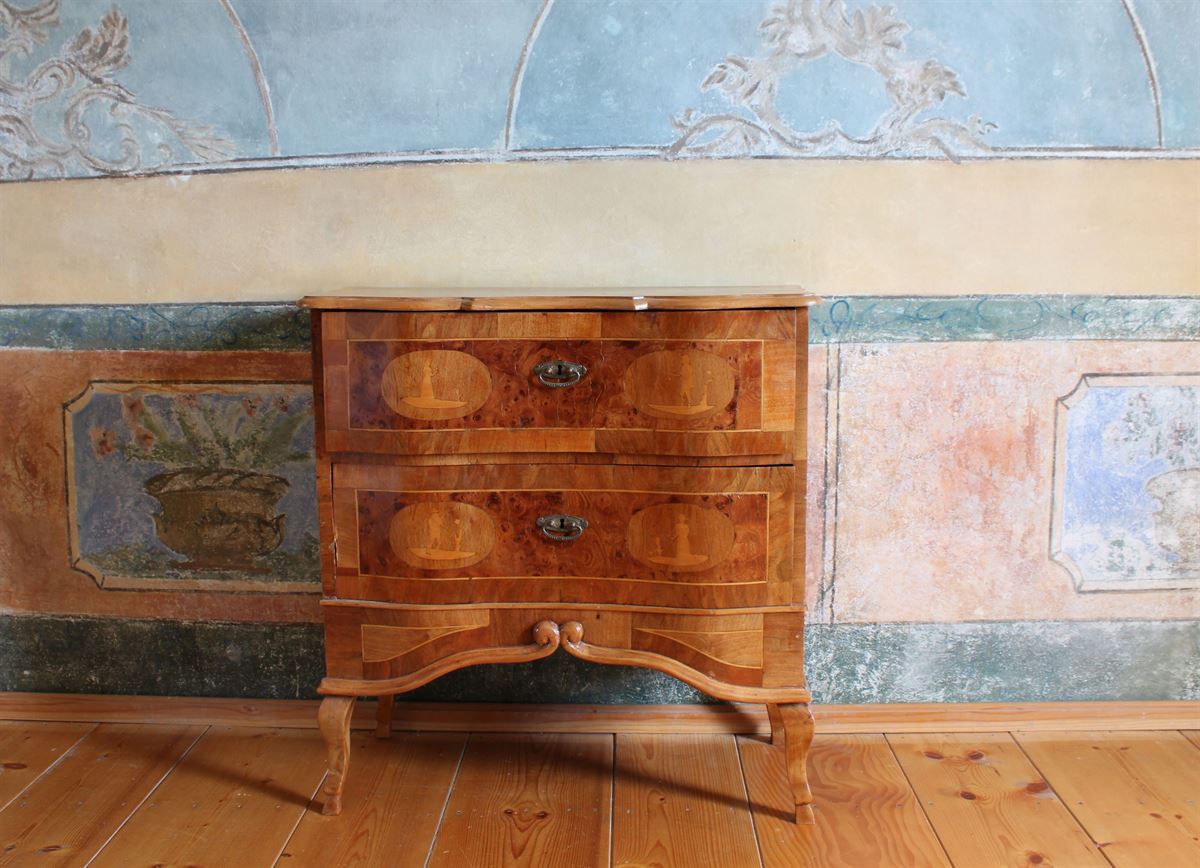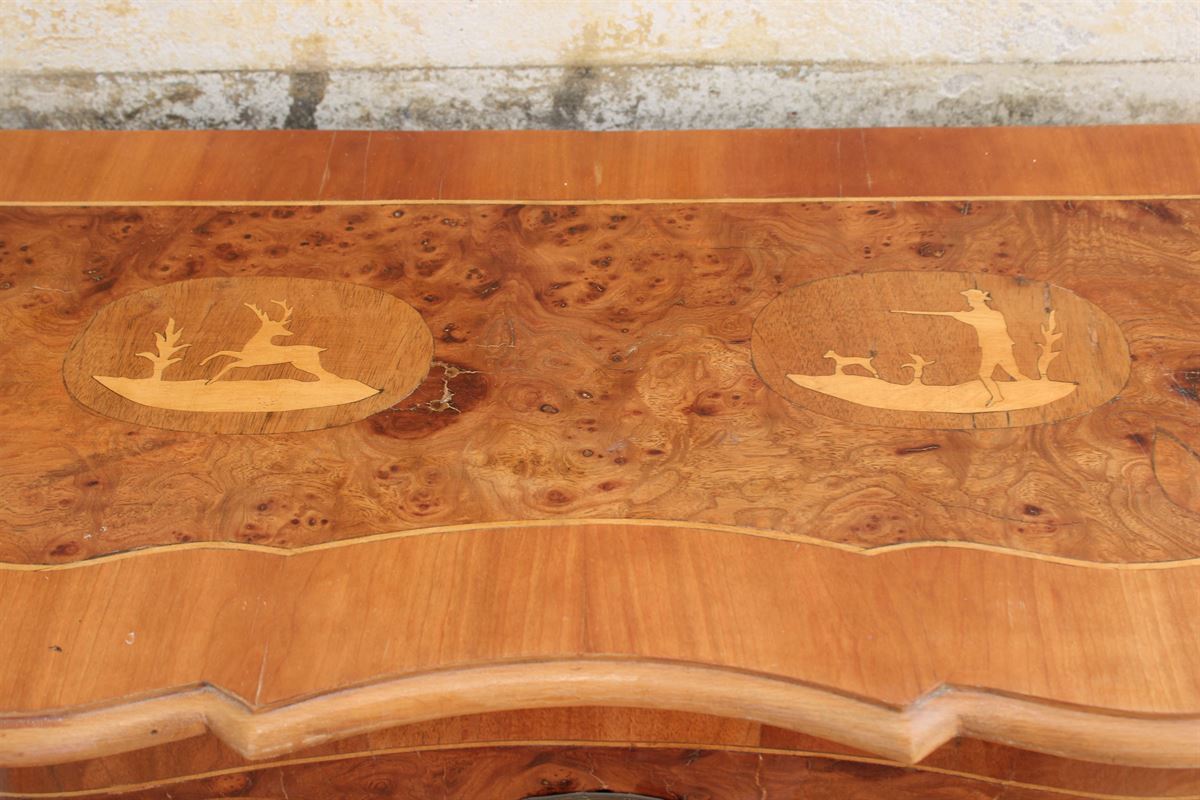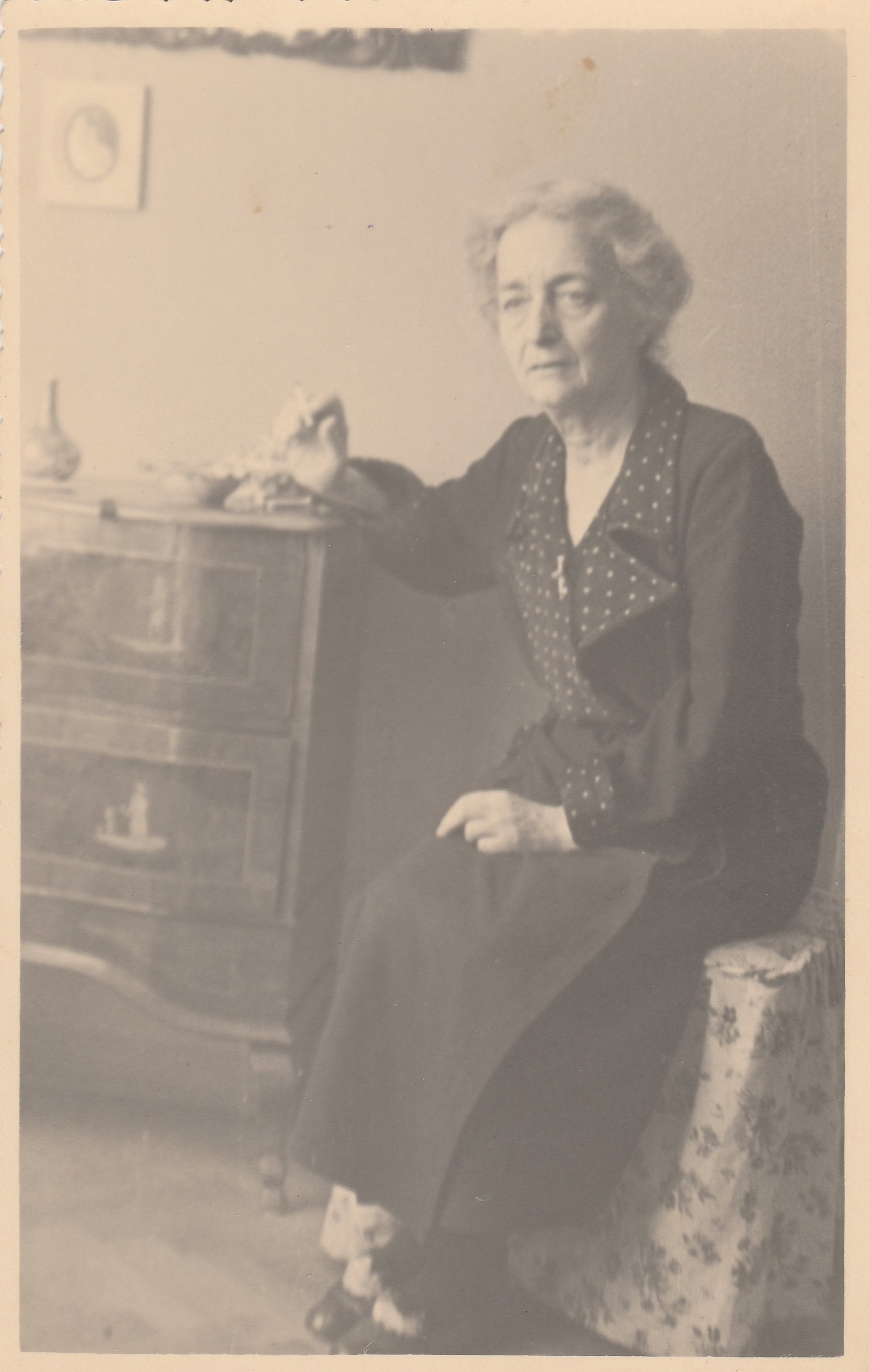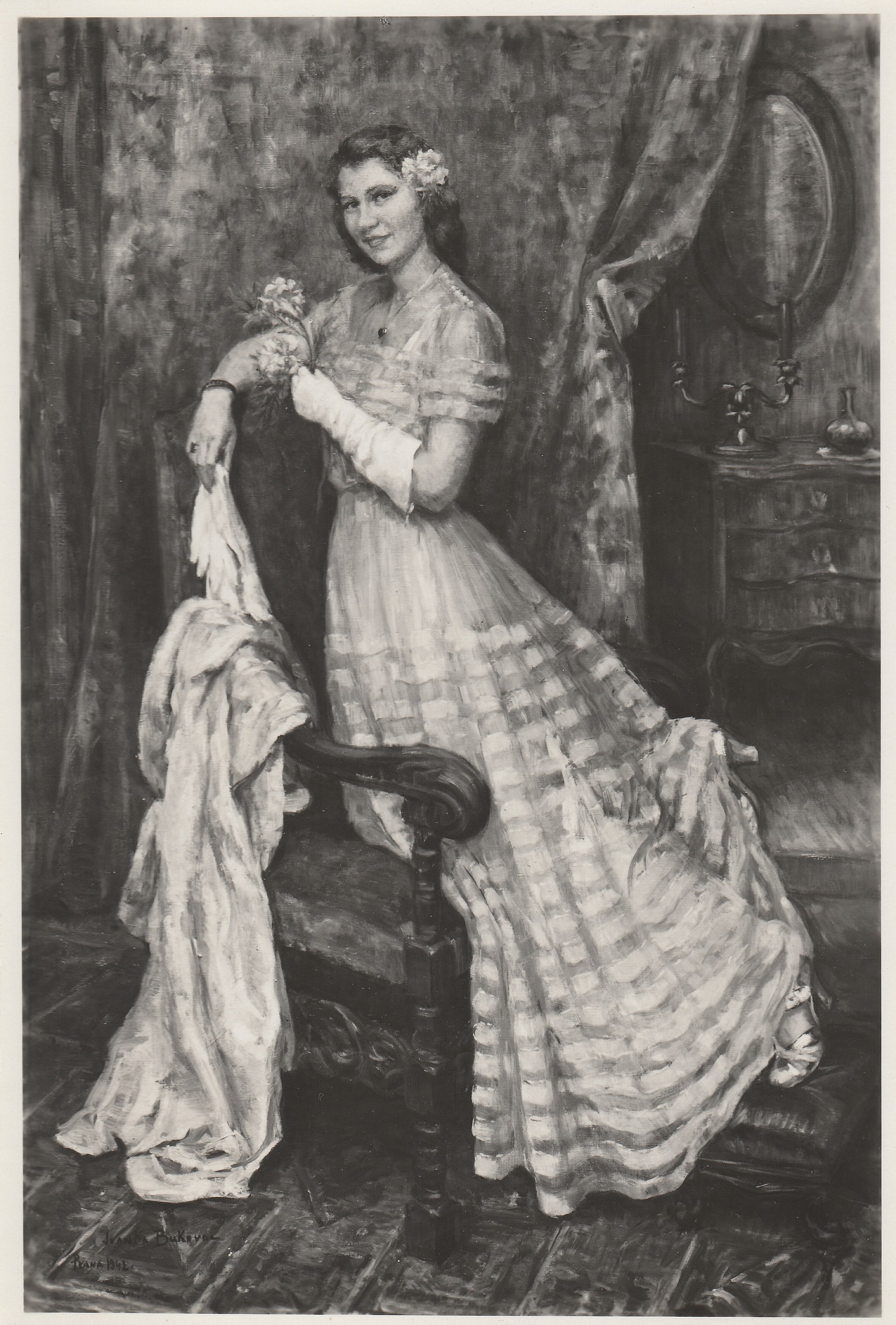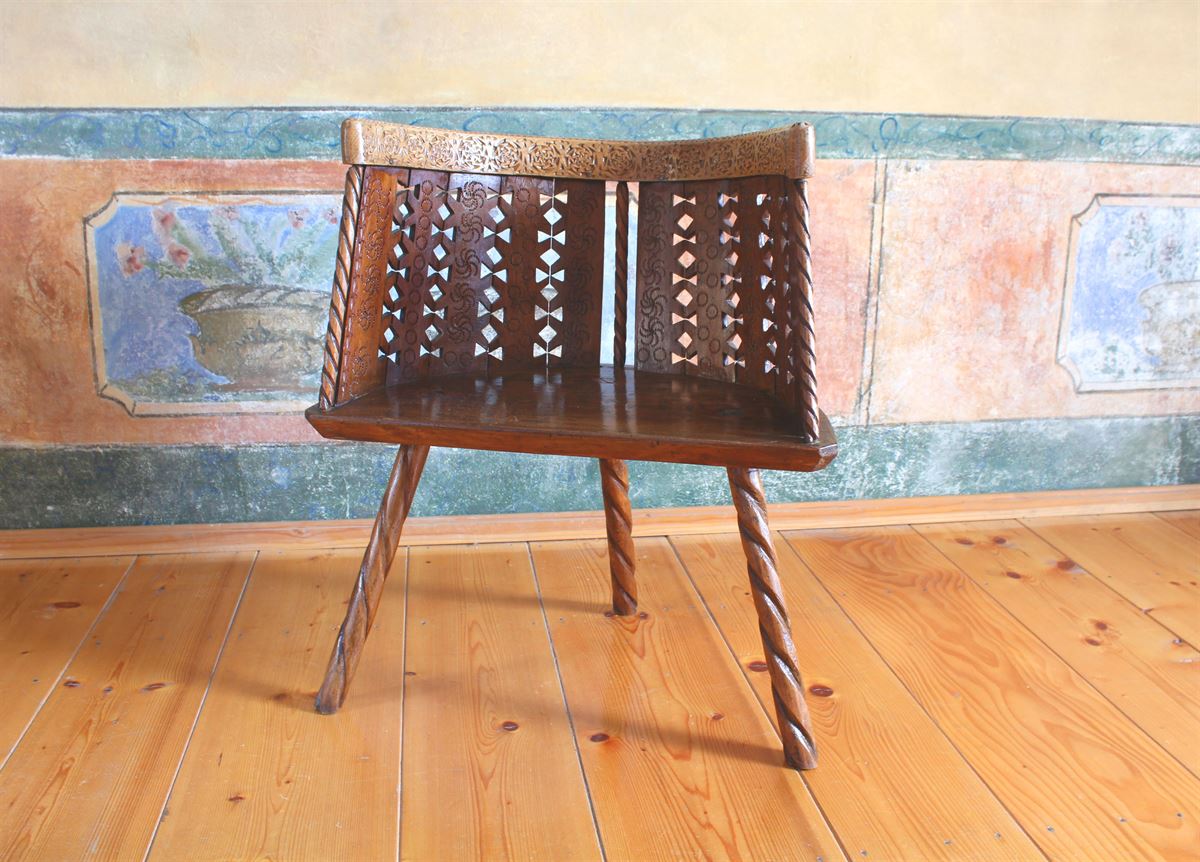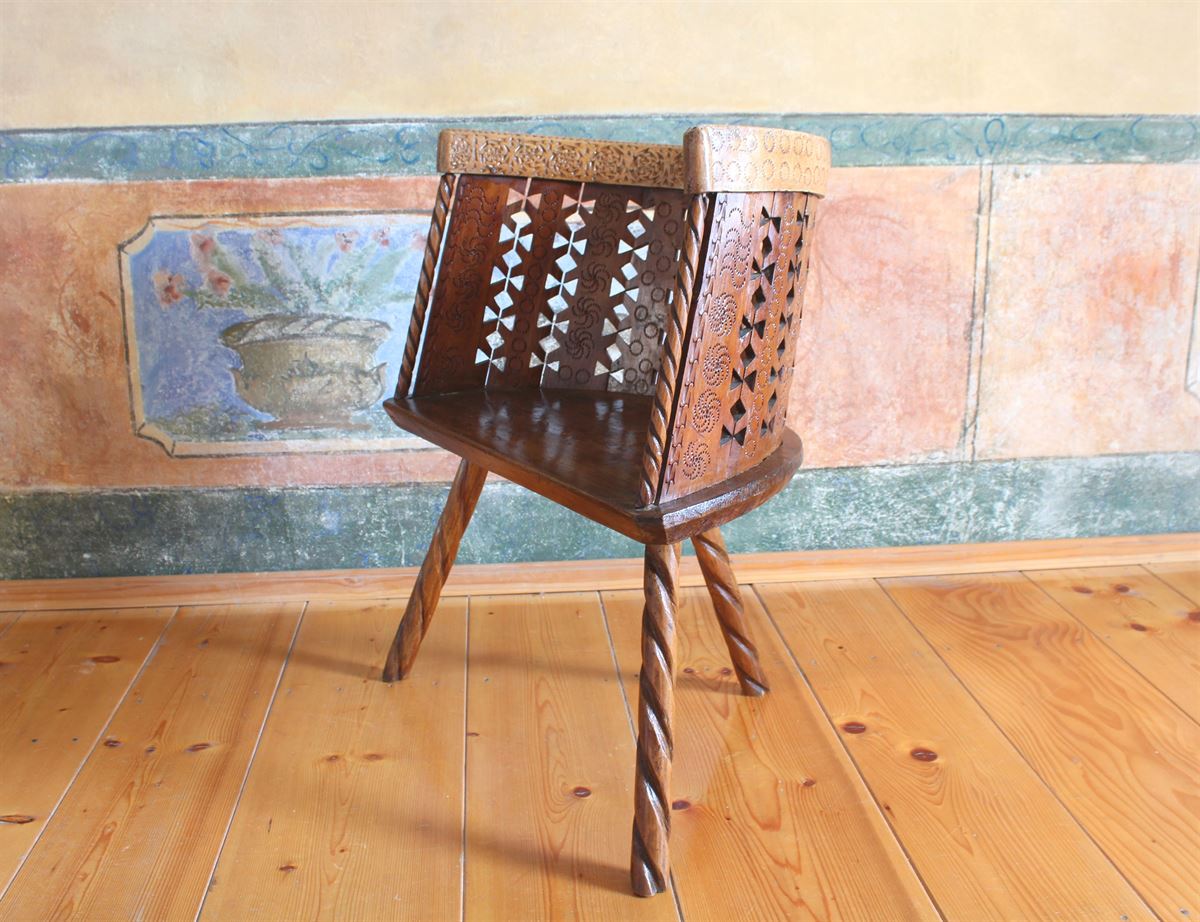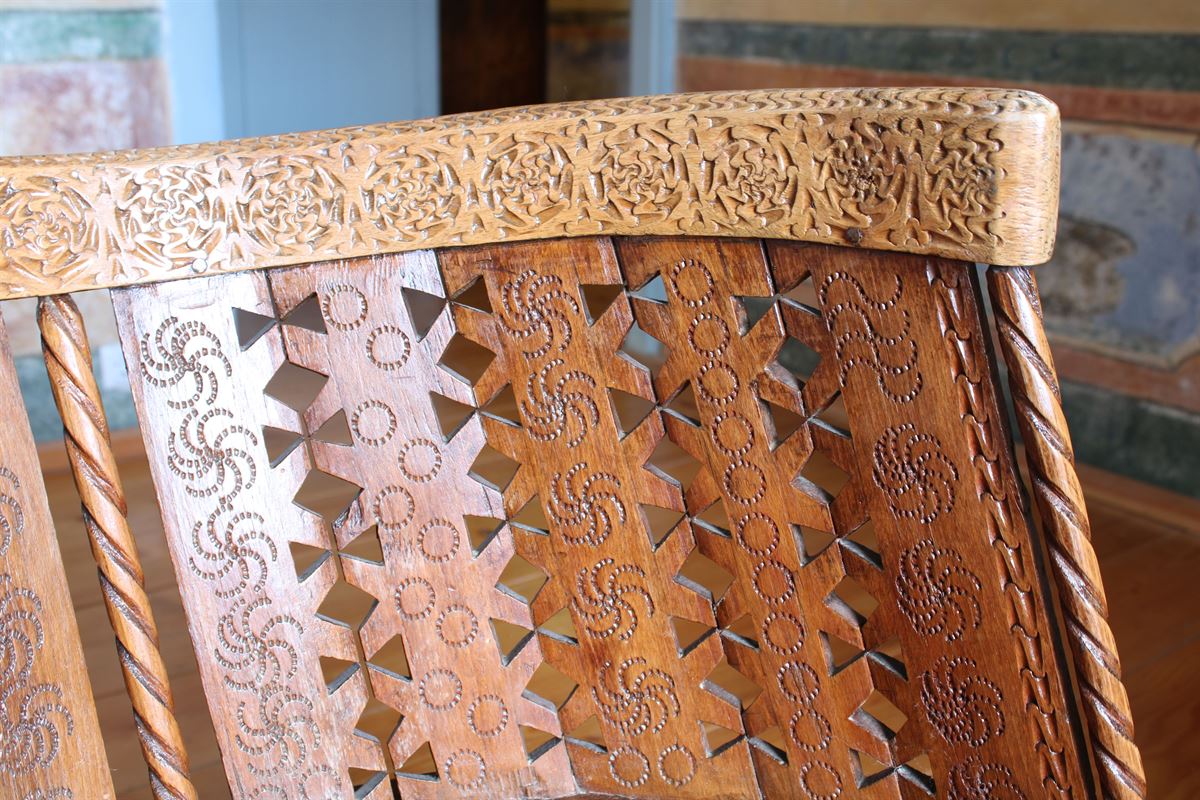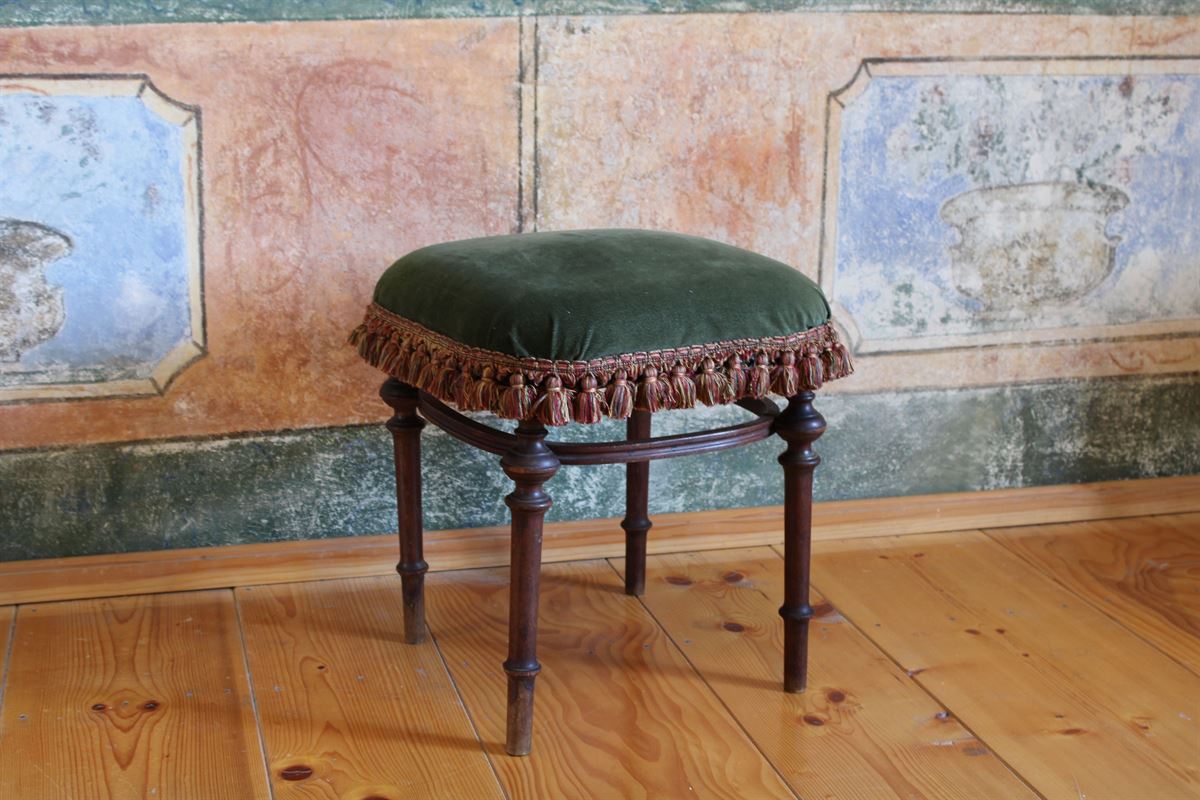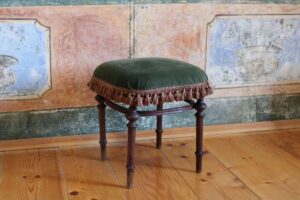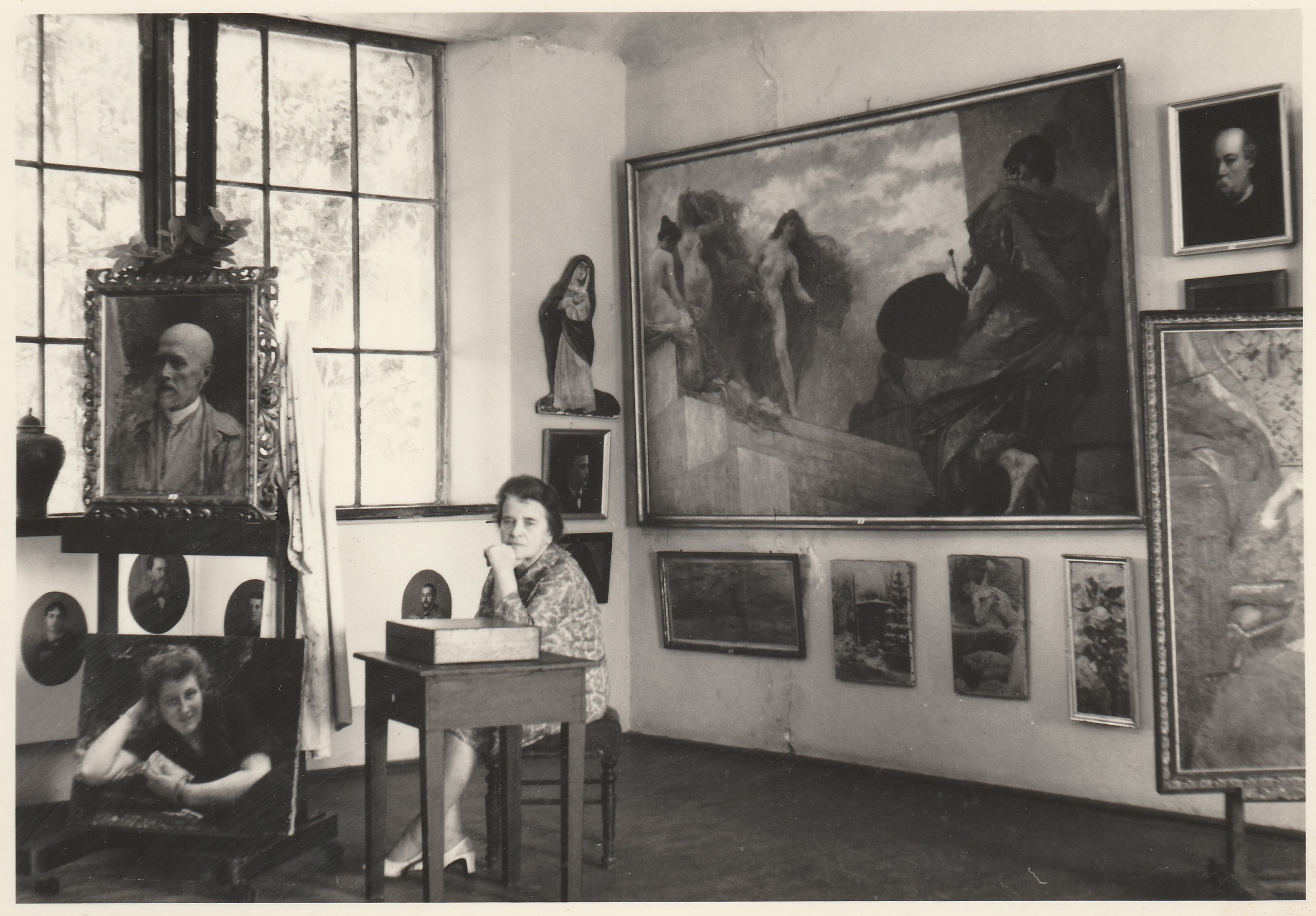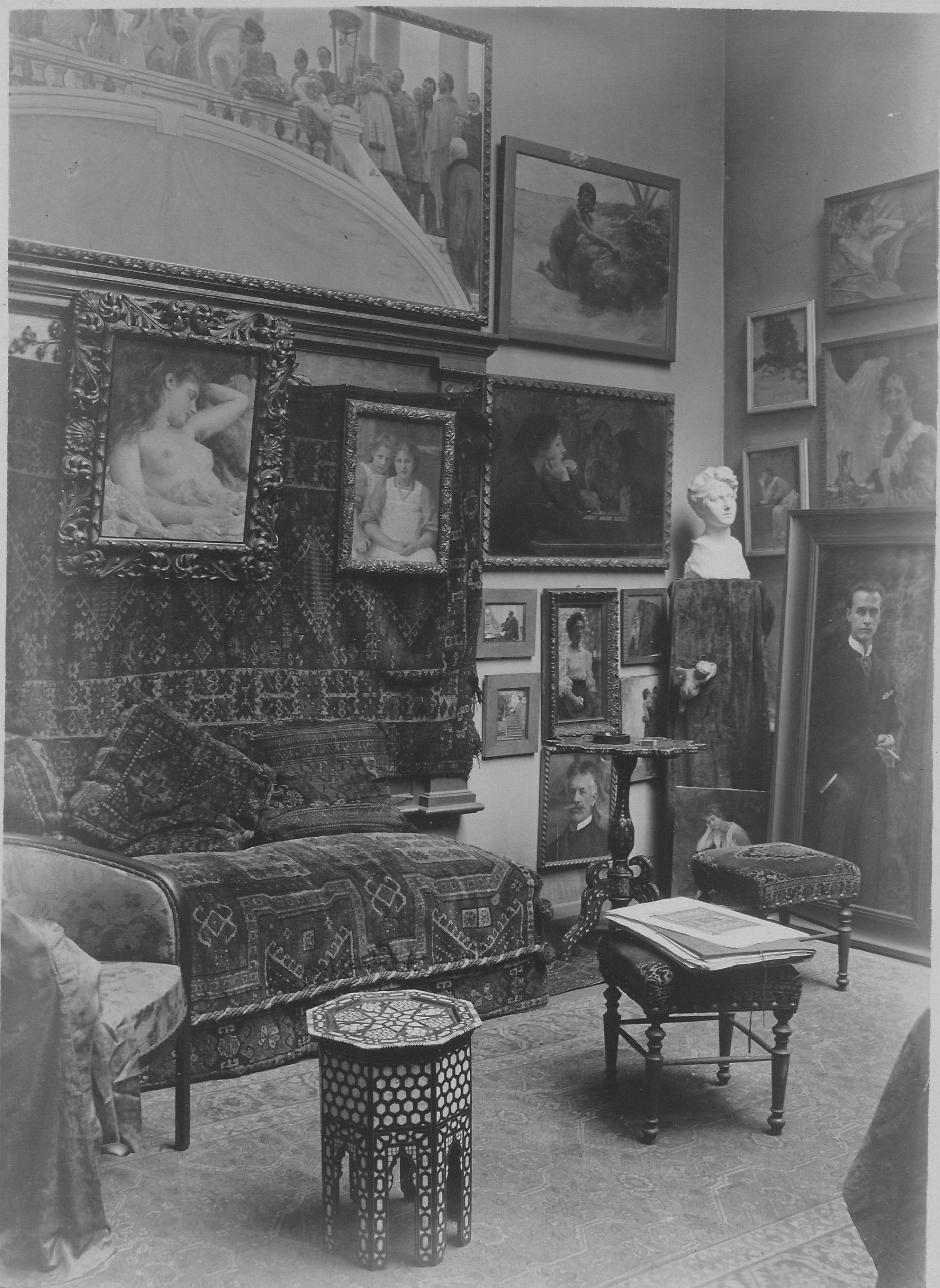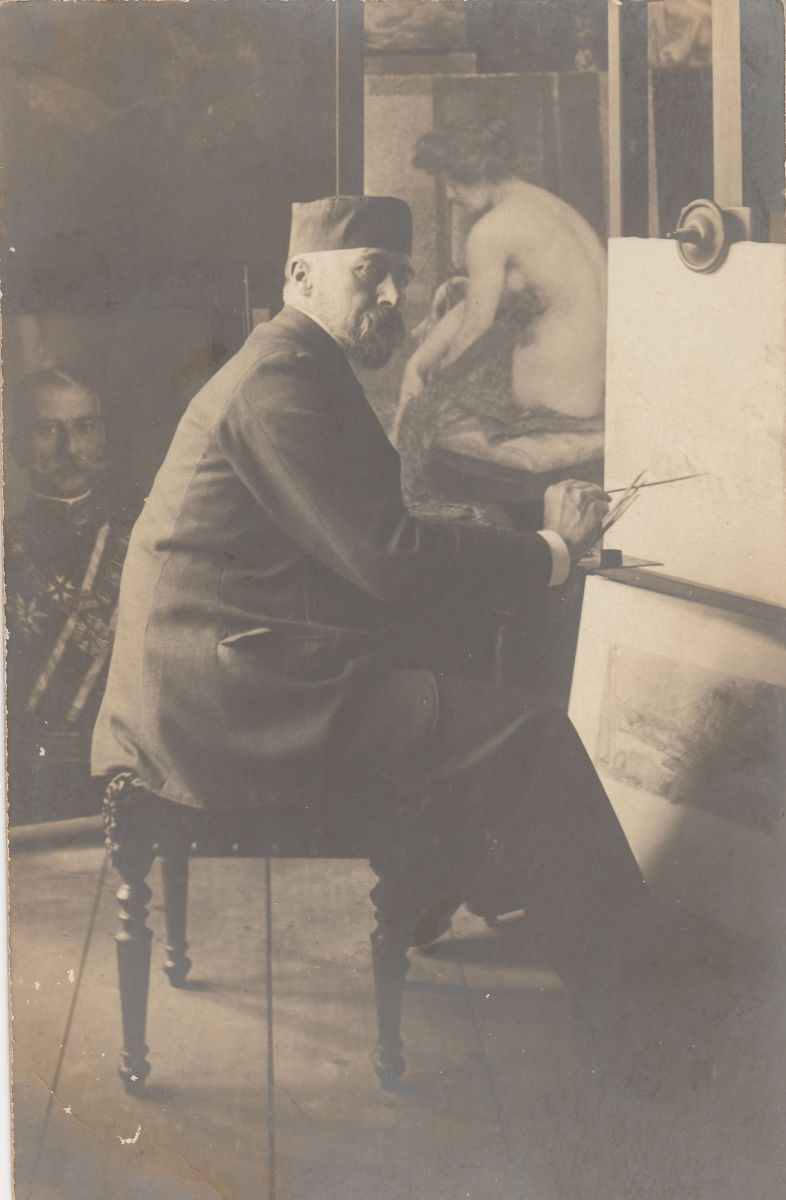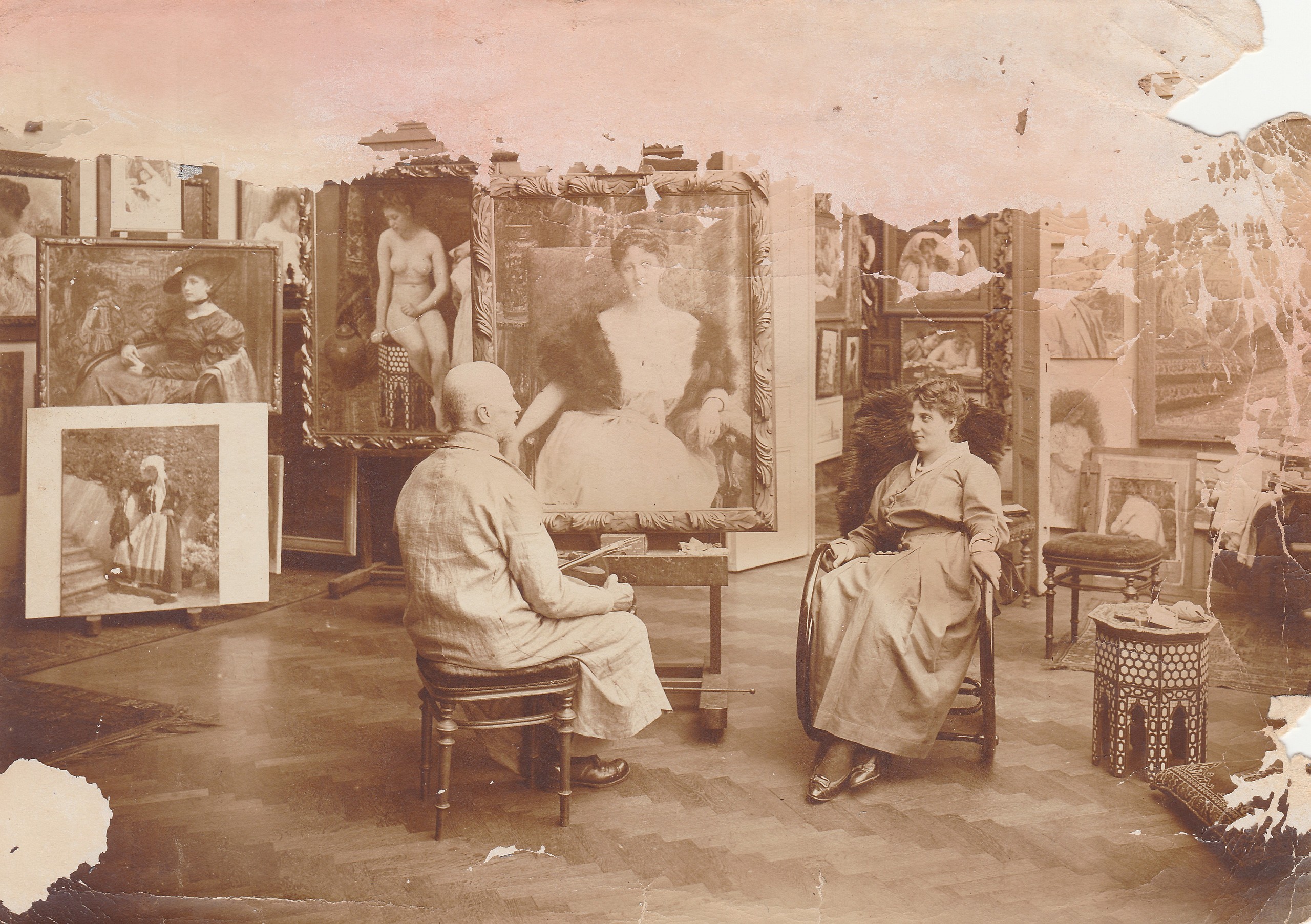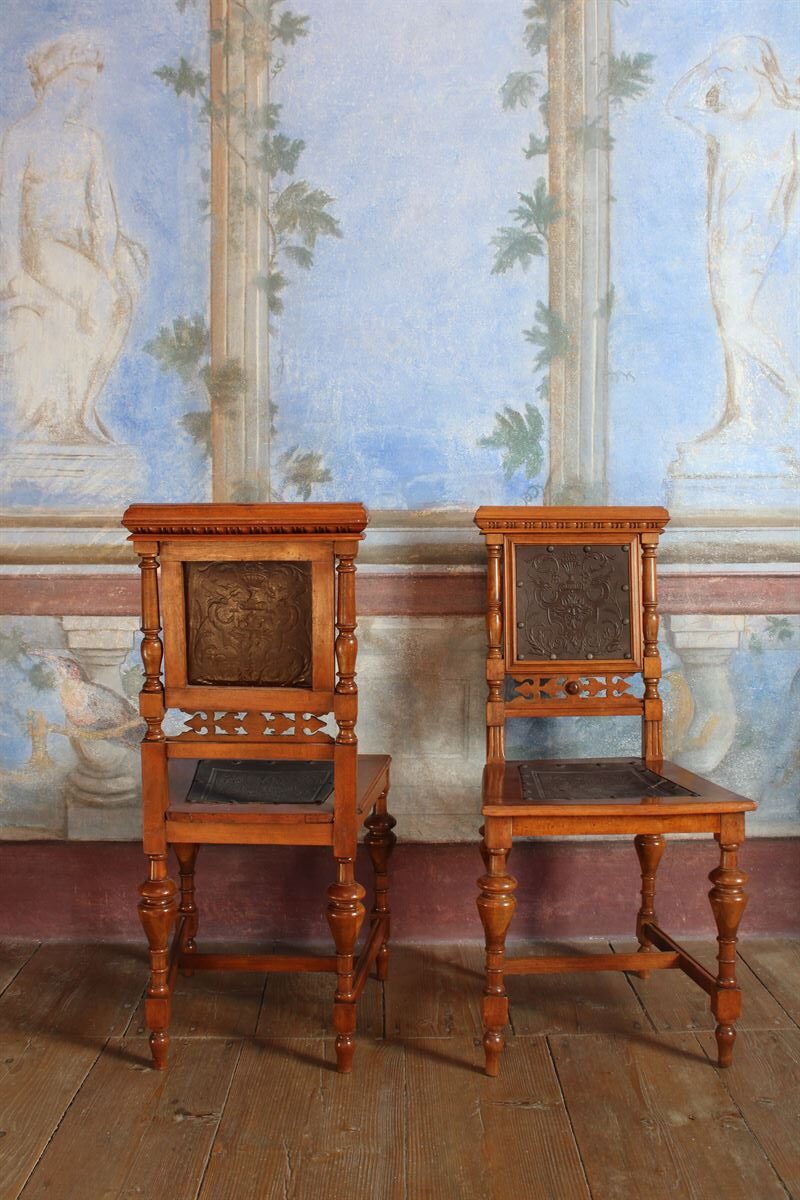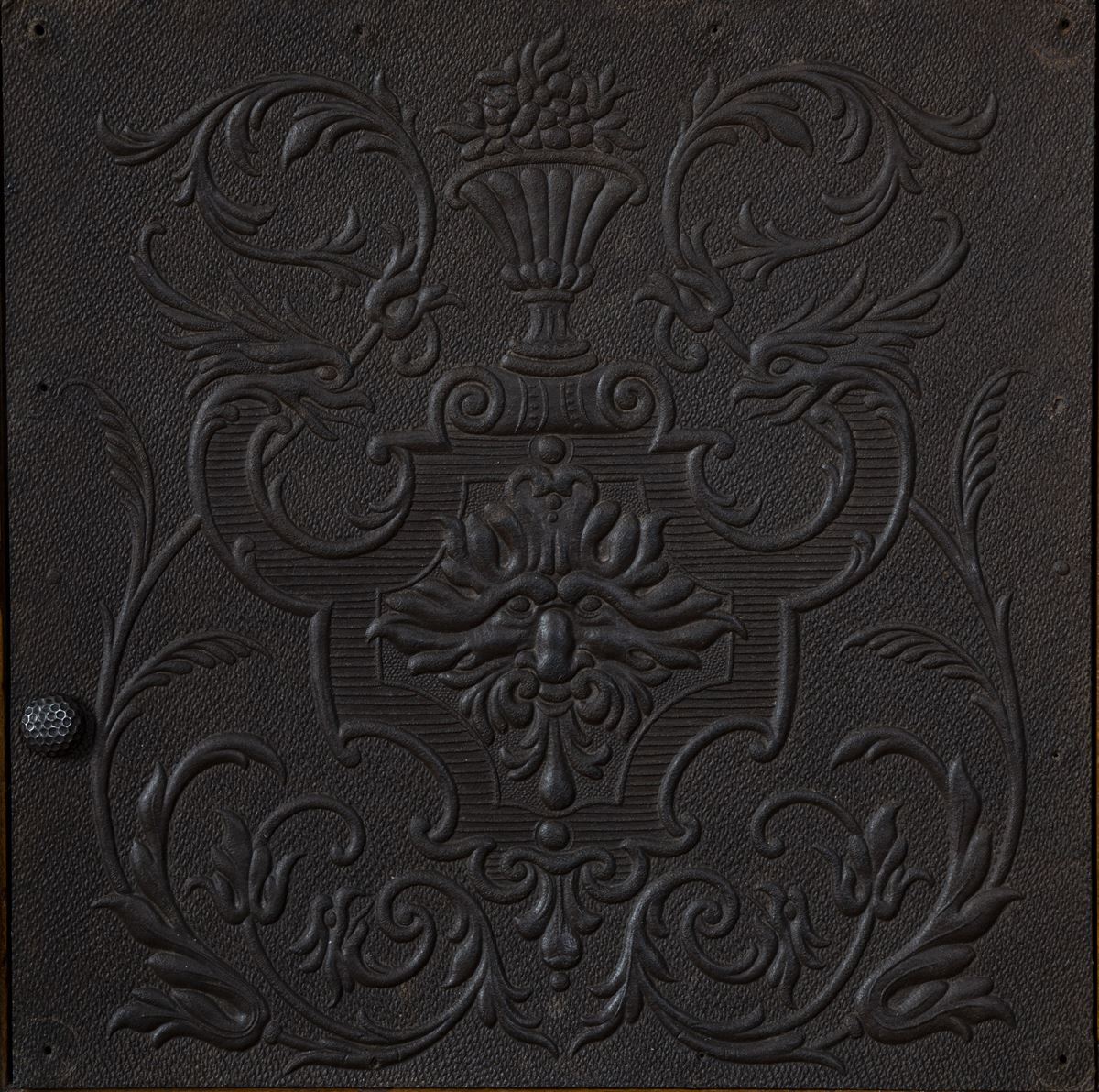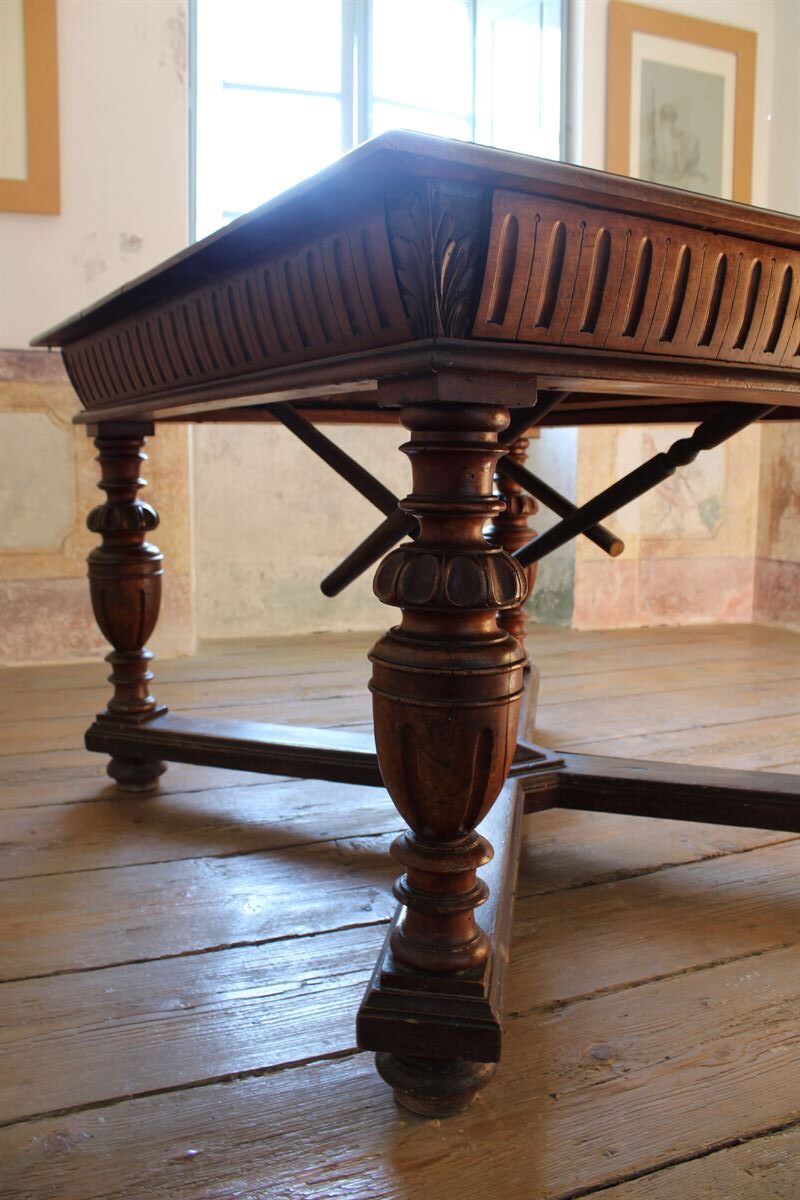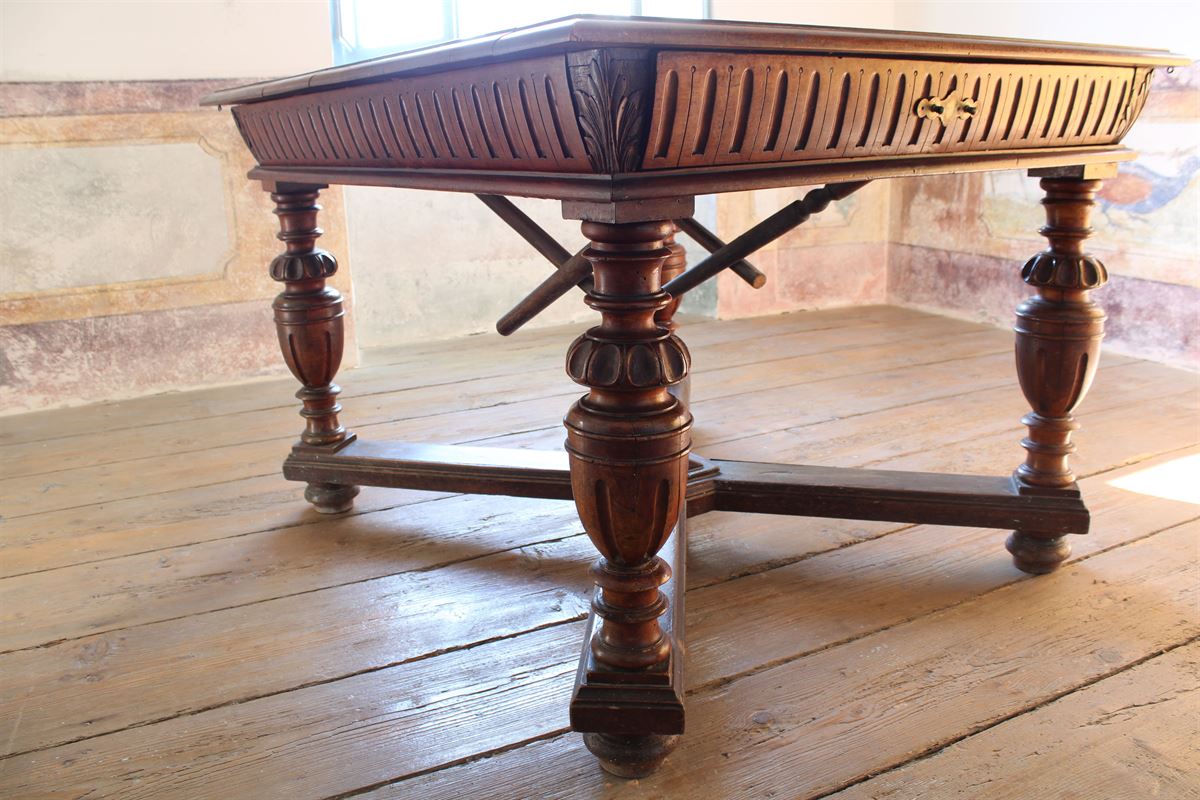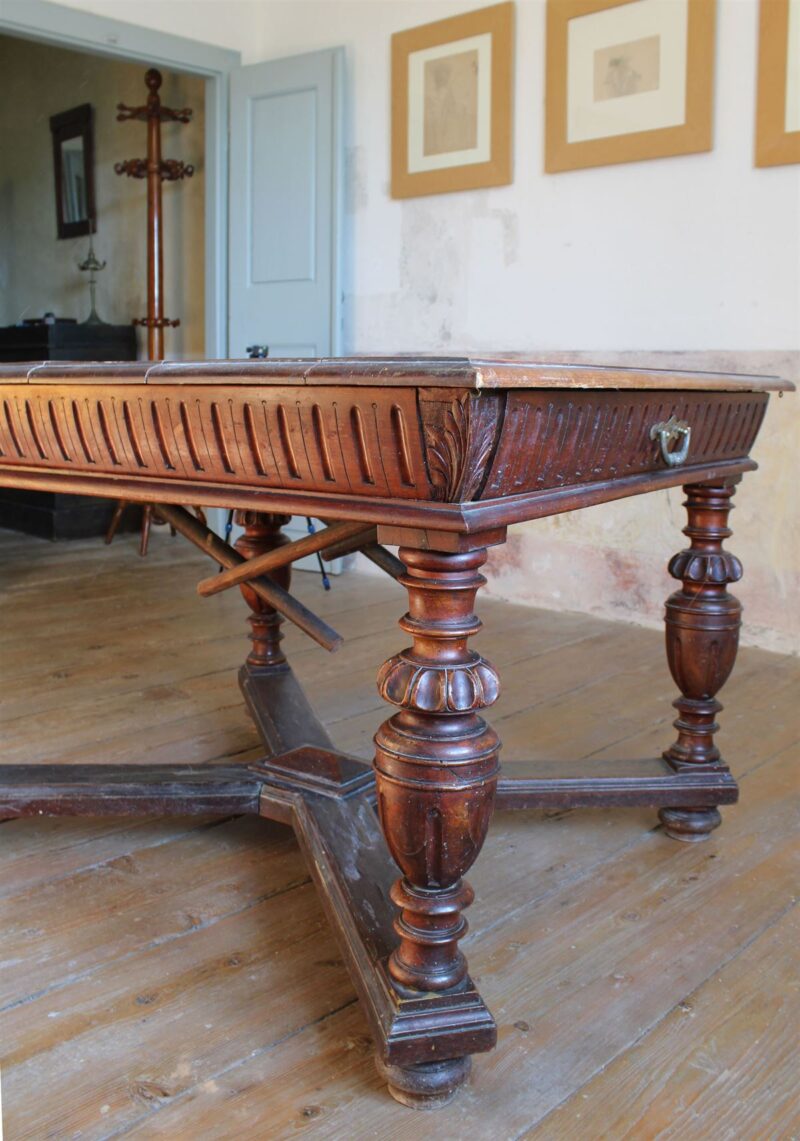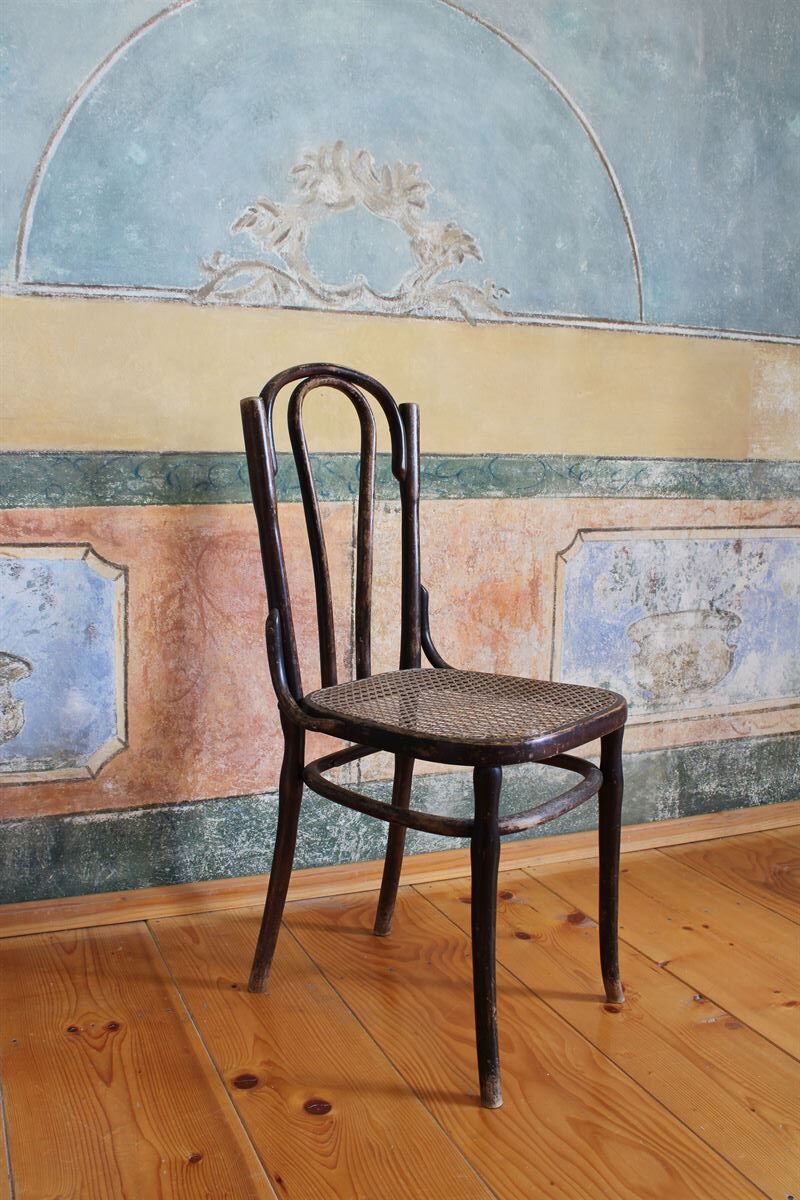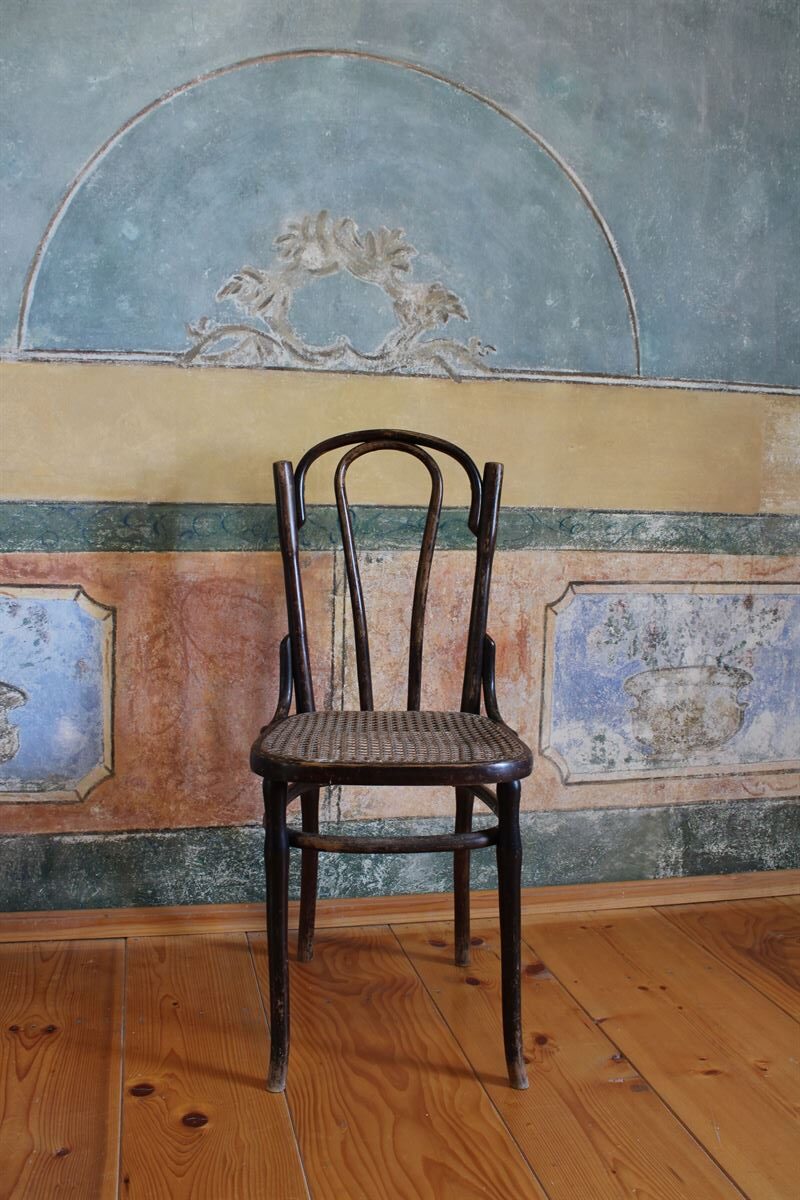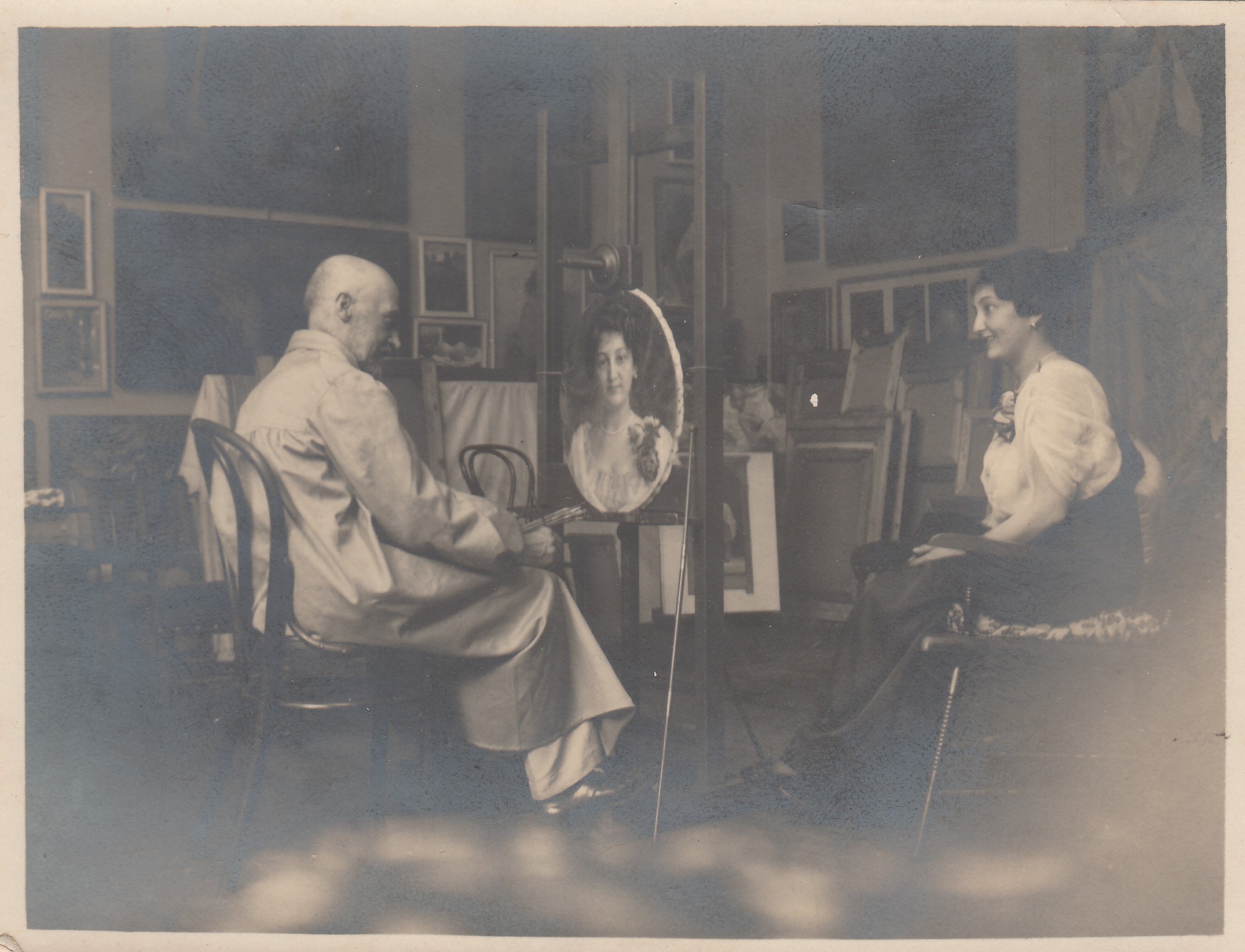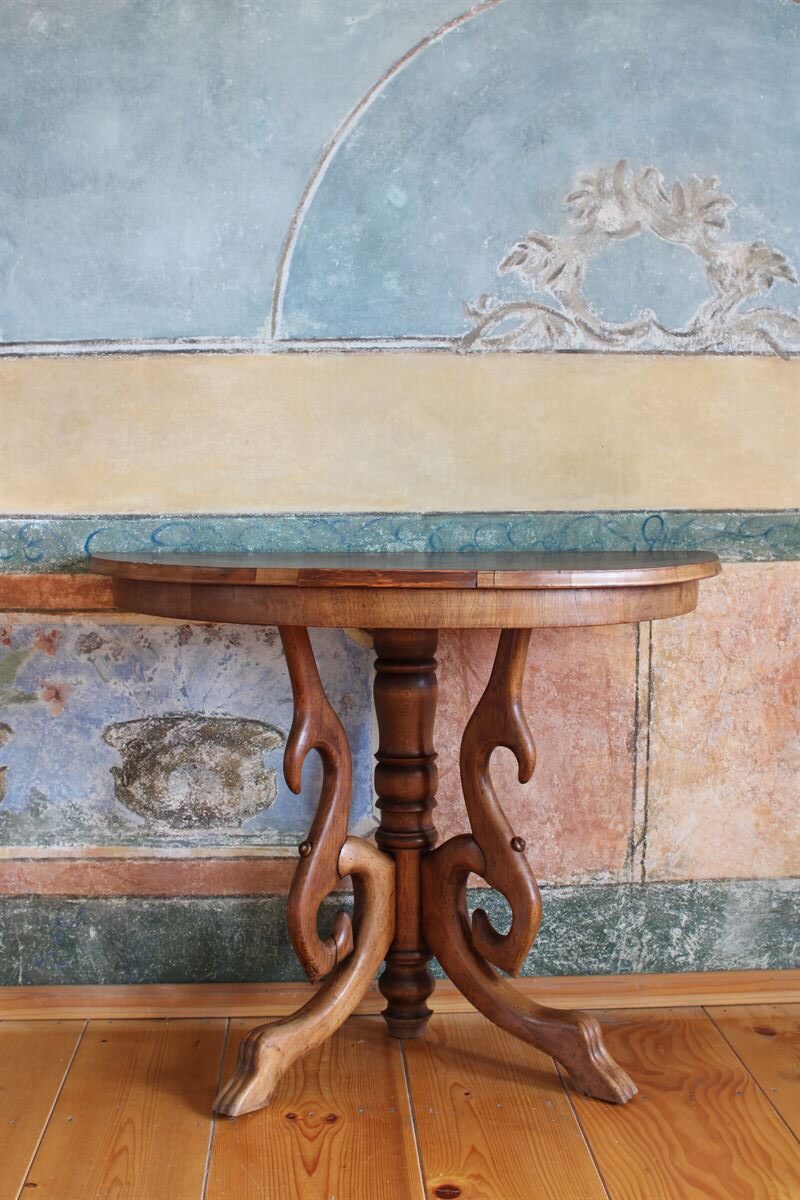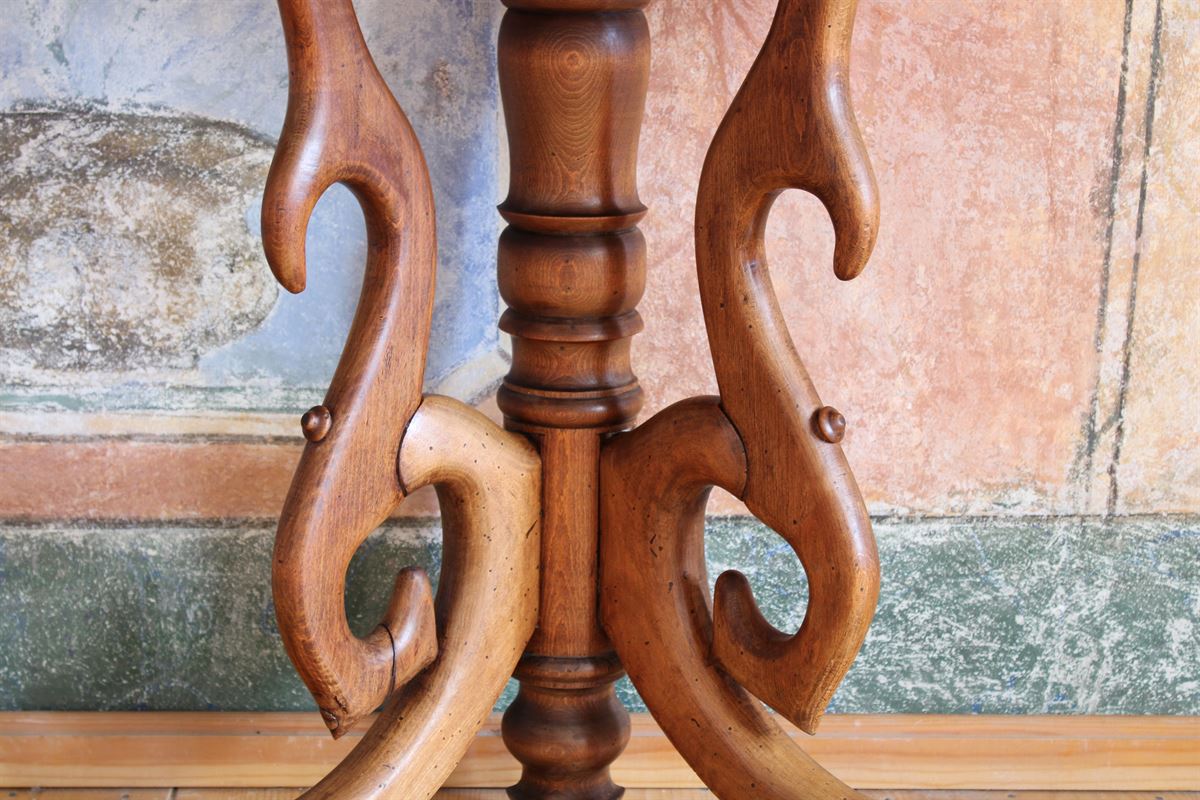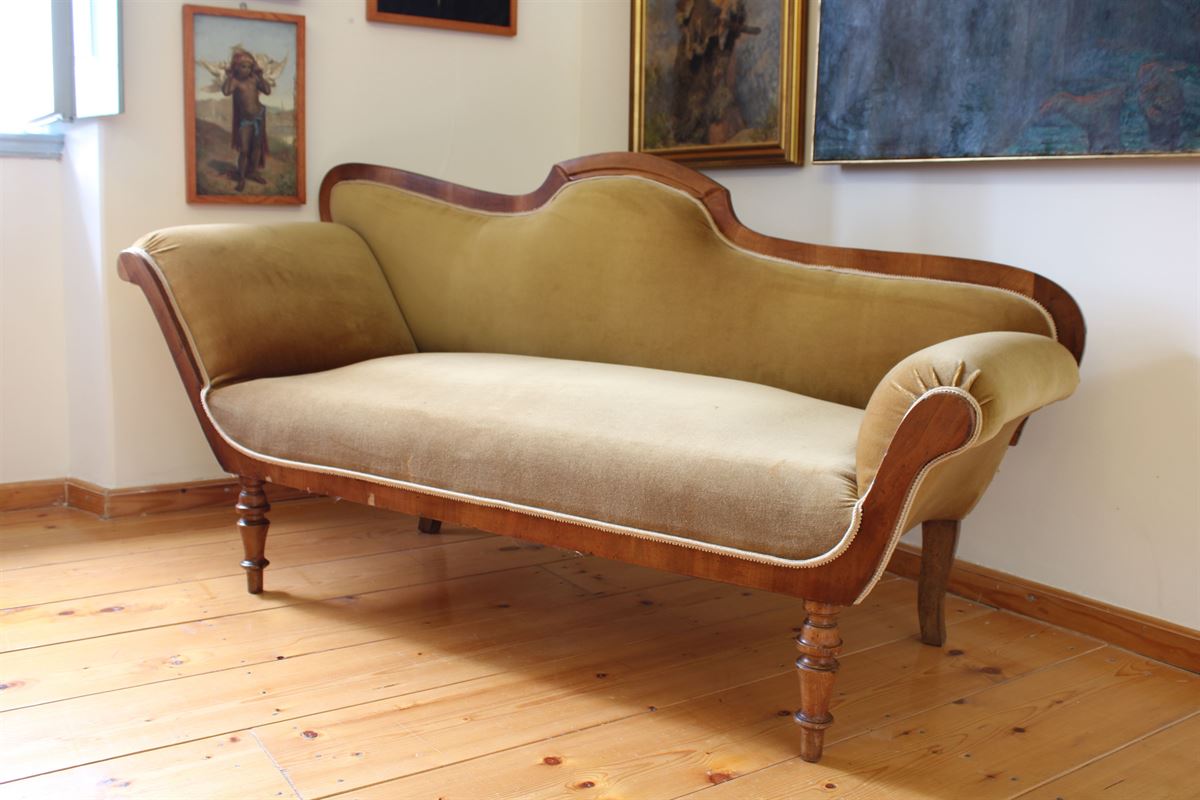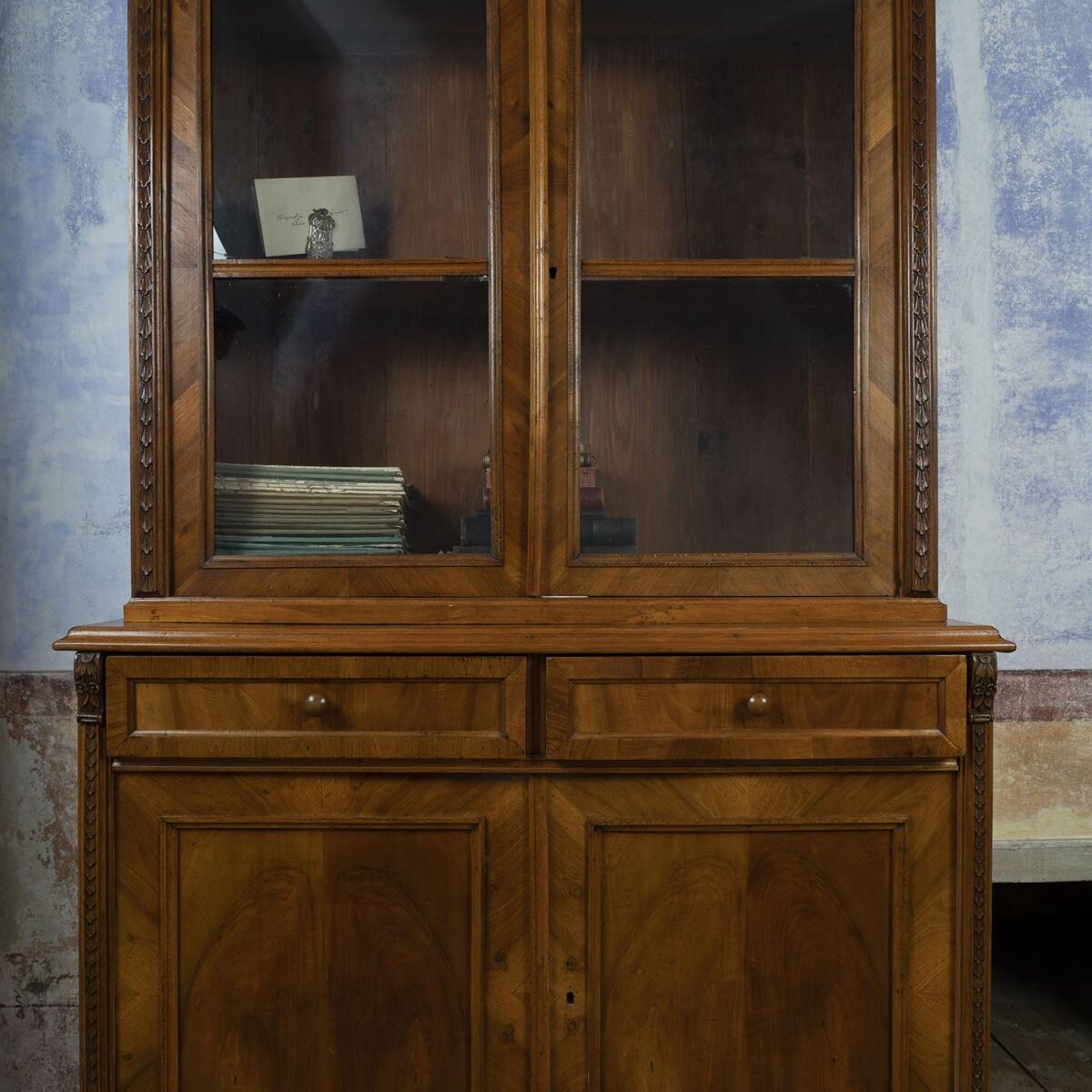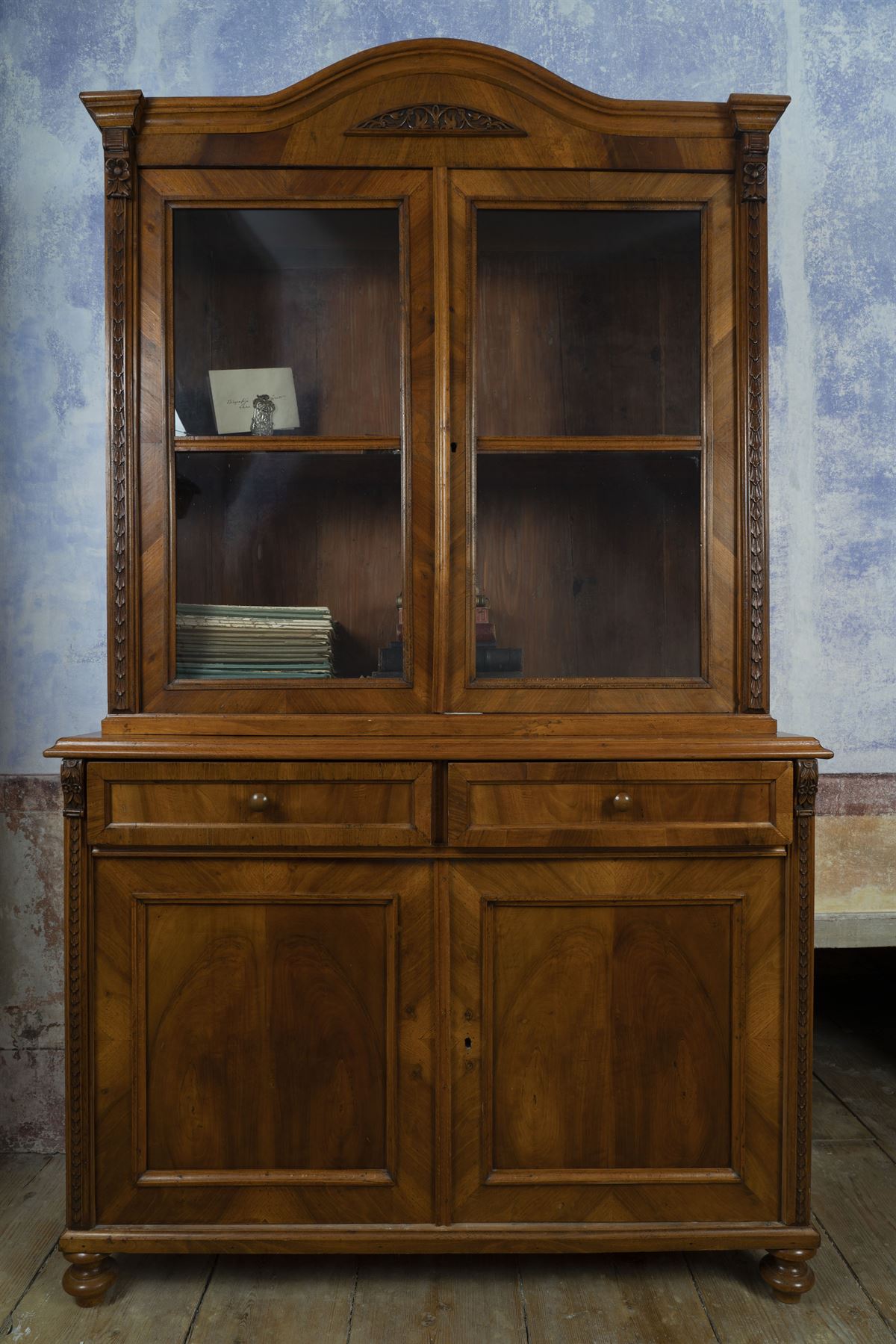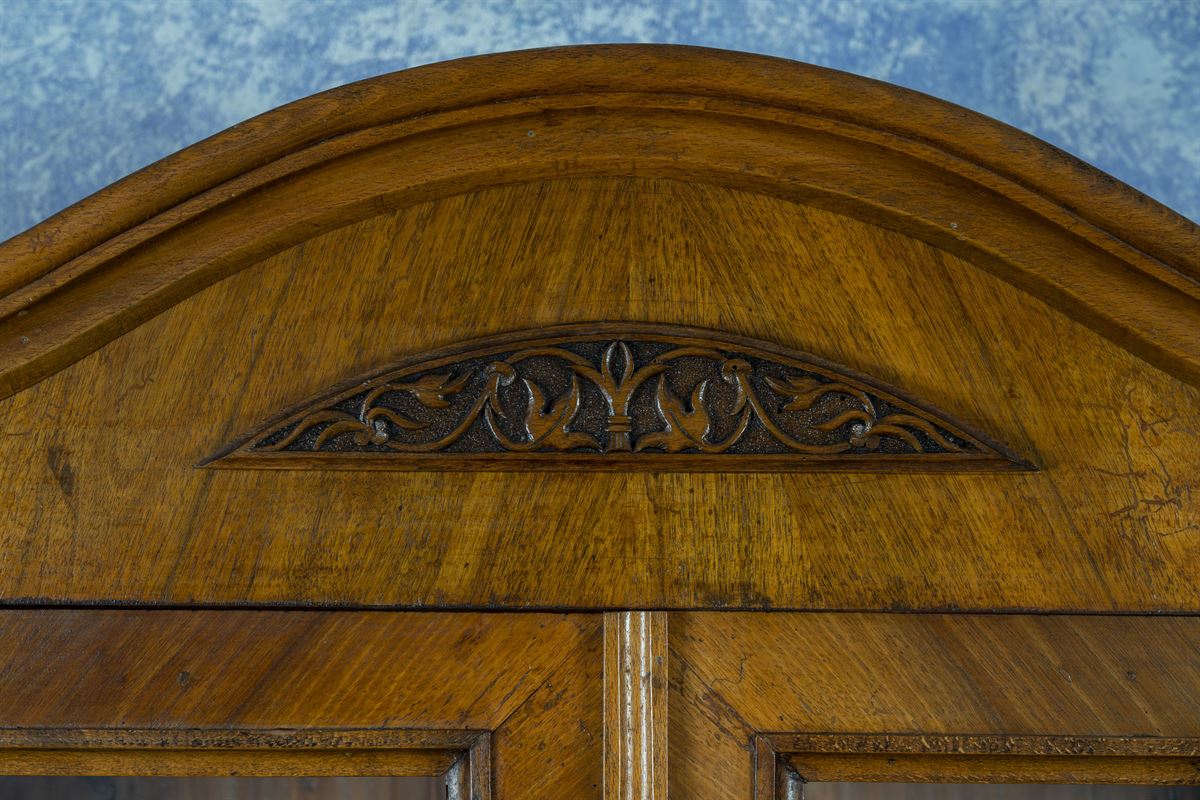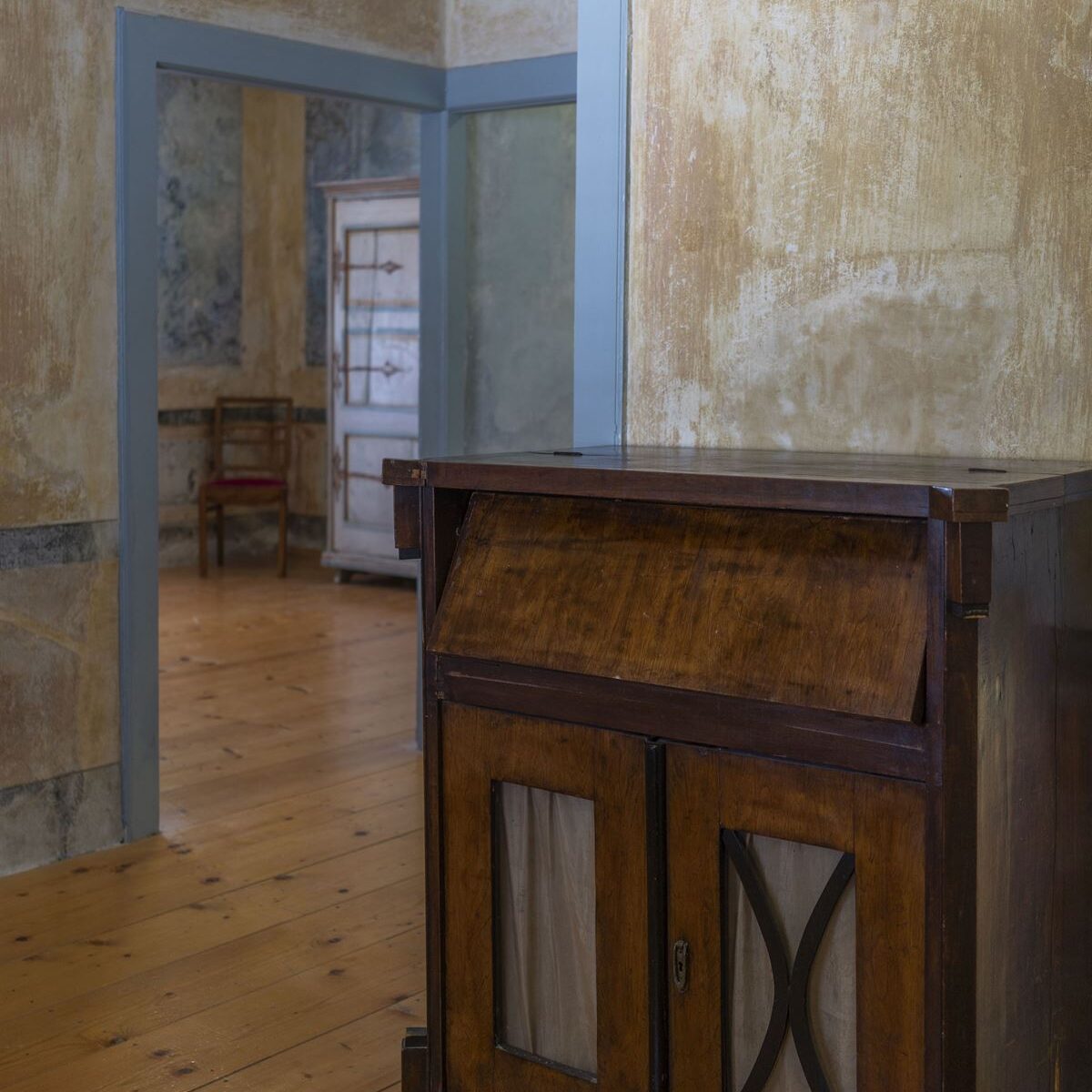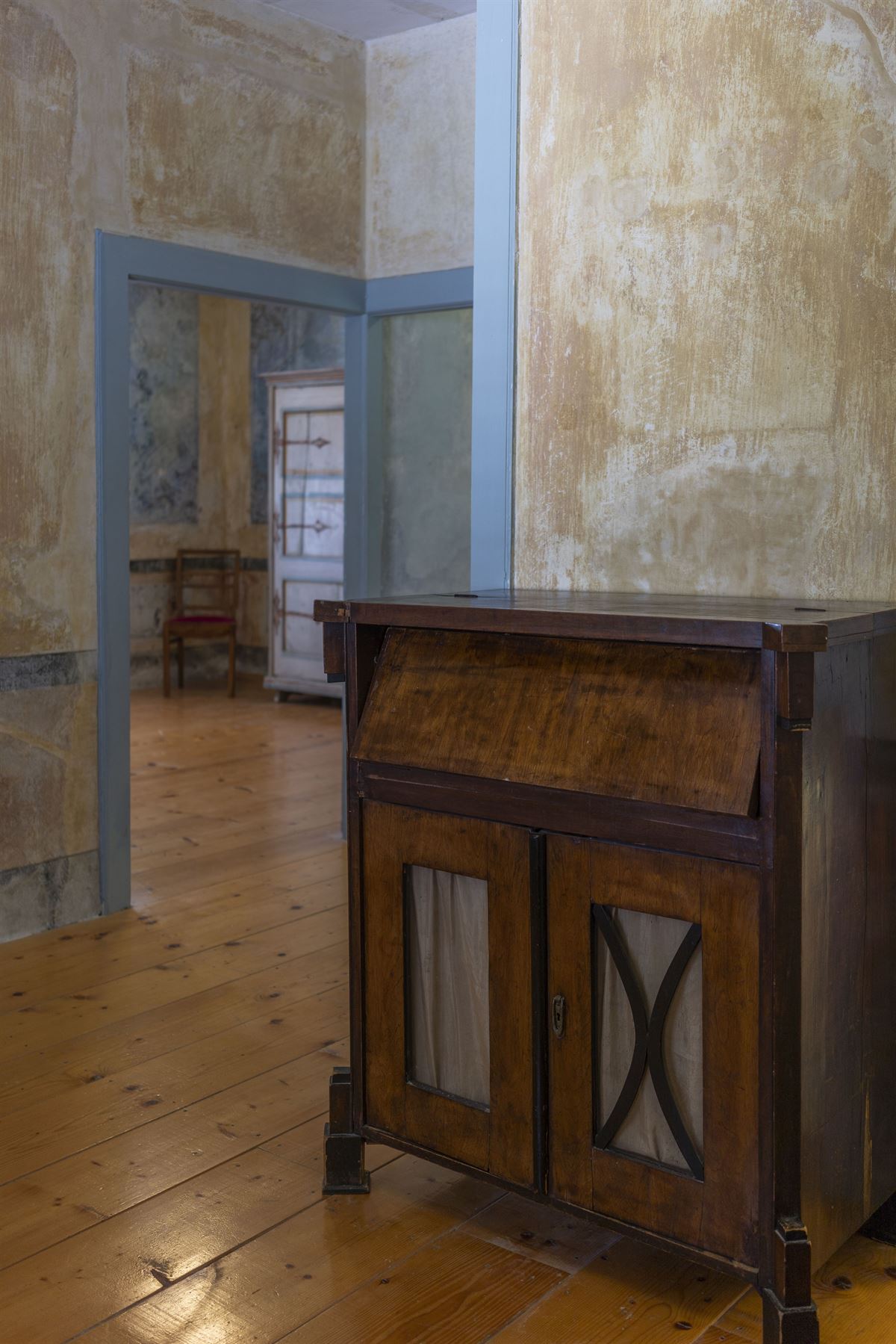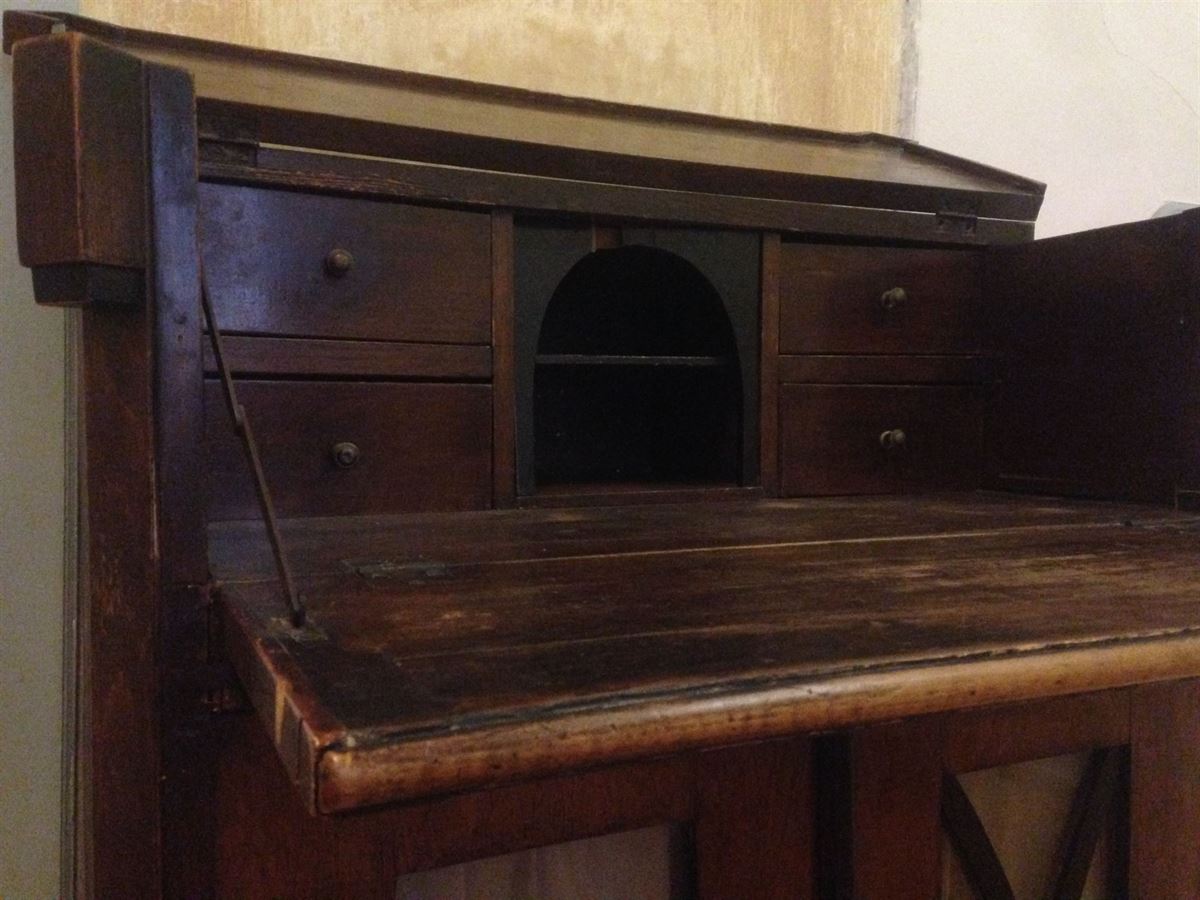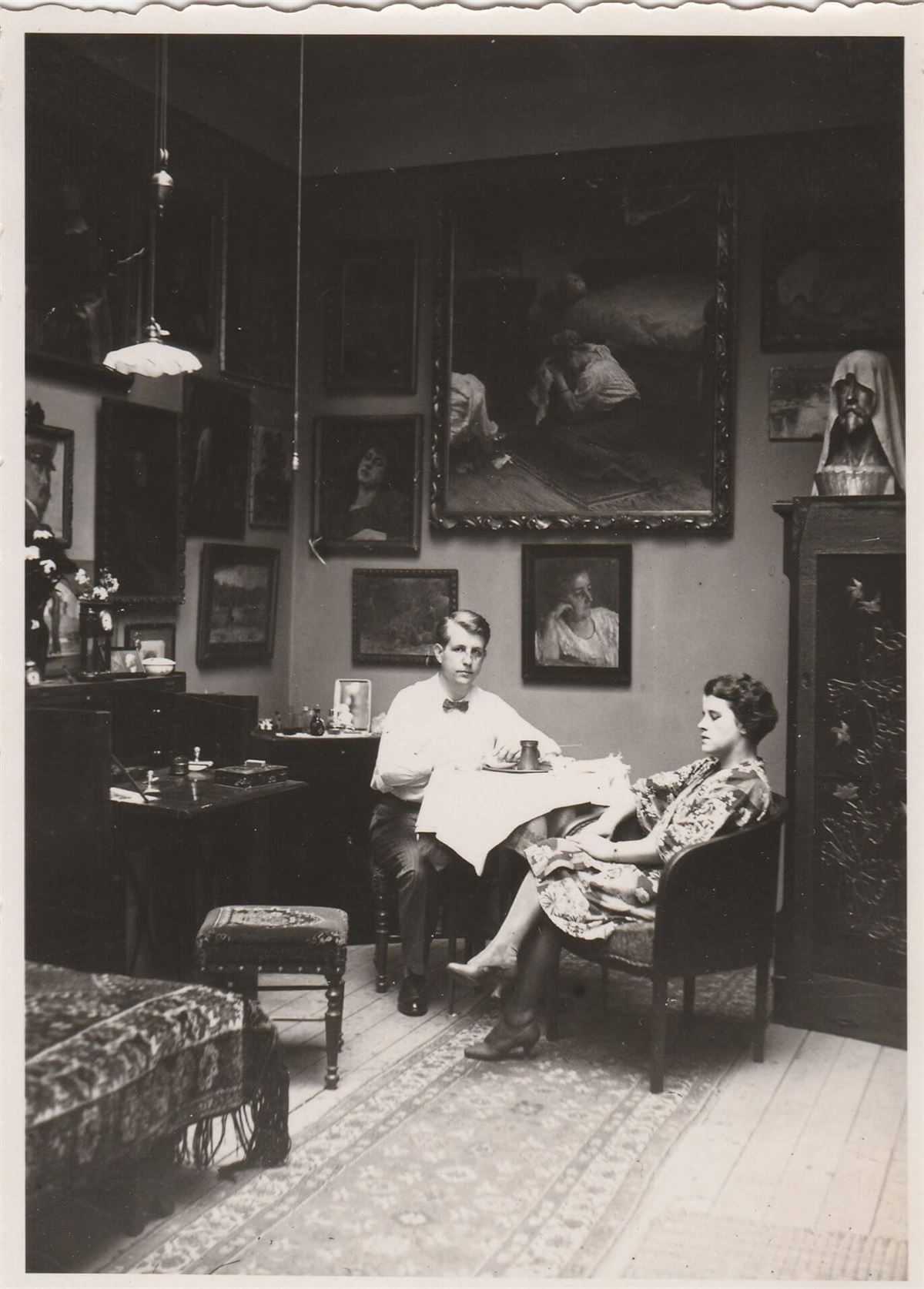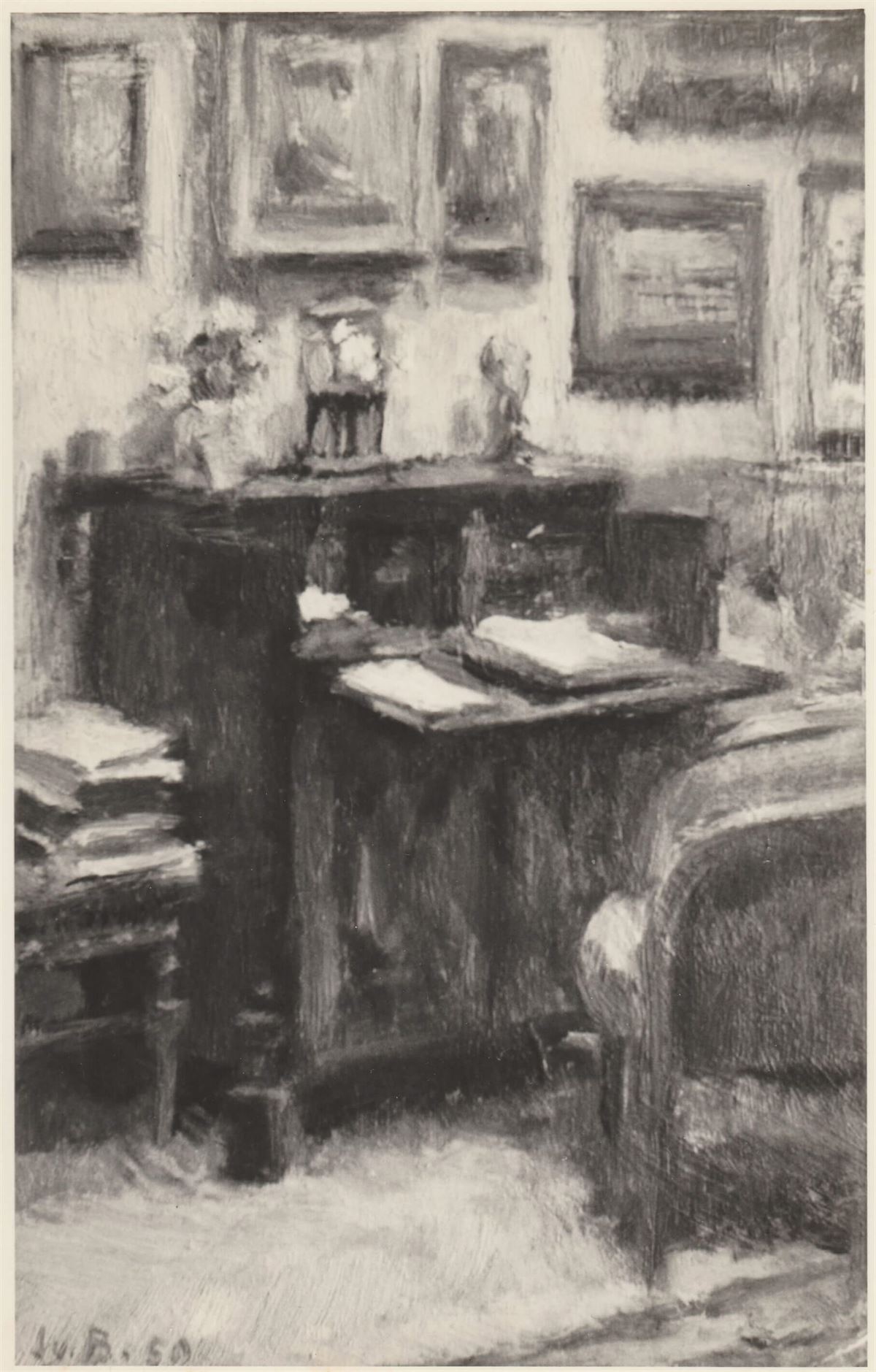tablica
| Inventory number: KB-727 |
| Material: wood, veneer, paper, metal |
| Dimensions: 82 x 80 x 35.5 cm |
| Dating: 19th century |
| Origin: Italy |
Središnji sadržaj
The chest of drawers is veneered and inlaid, featuring two gracefully designed drawers. It stands on stylised pied-de-biche legs with convoluted ornamentation at the base. On the top surface and drawers, there are two inlays each within oval panels with figurative representations. On the top surface, one oval inlay depicts a stag, while the other oval inlay portrays a hunter with a rifle and a dog. The drawers contain inlaid panels depicting a man in one oval and a woman in the other. The drawers have subtly designed metal handles with keyholes.
The technique of marquetry, decorating wooden objects by embedding elements of different types of wood or materials, was inspired by ornamental mosaics. In older examples of marquetry, known as stile alla certosina, geometric shapes prevail, while botanical and figurative motifs are introduced later. Initially, marquetry artisans mostly worked on church furniture, and only later did the technique start being applied to other household furniture.


